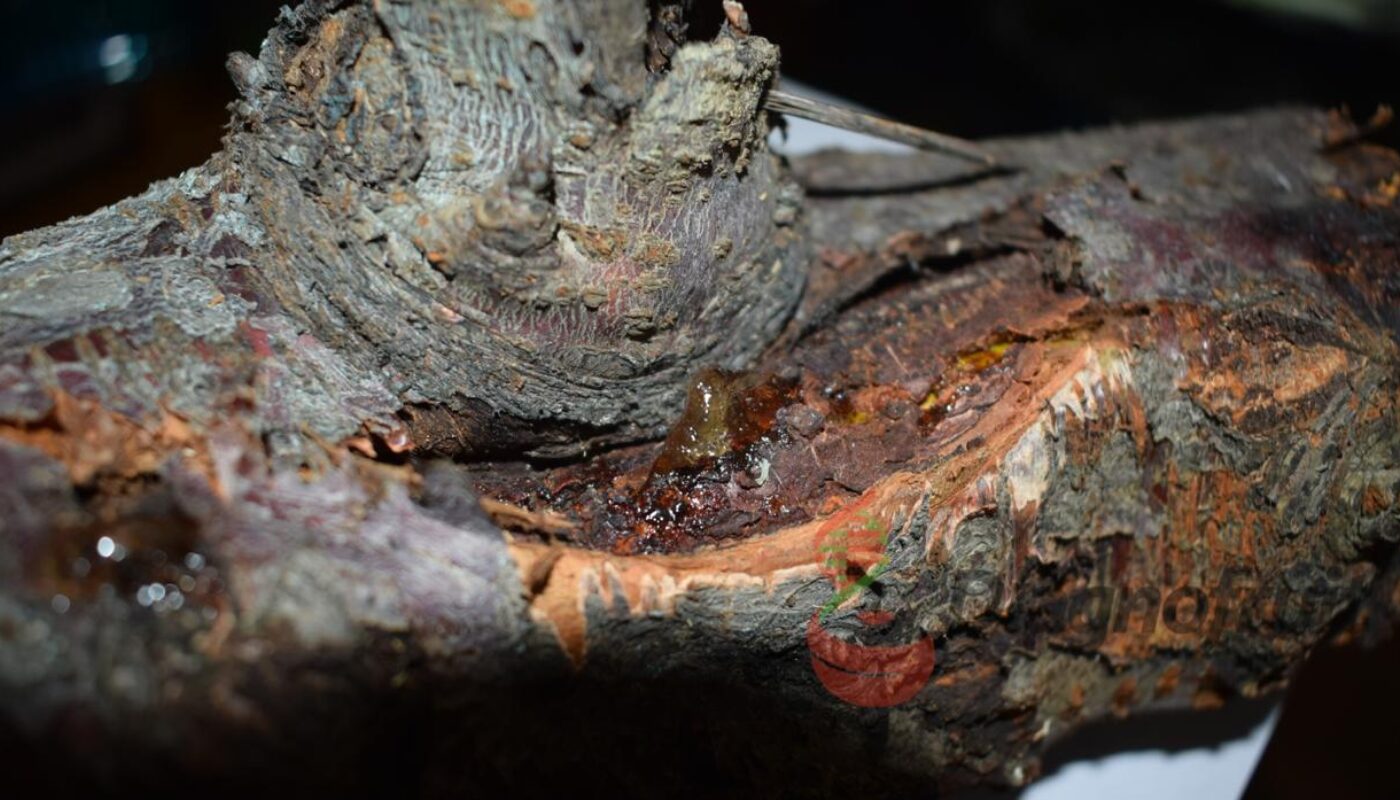Photo by: Héctor García
The bacterium Pseudomona syringae pv. syringae (Pss) can cause economic losses of 75% in the first years of planting and between 10-20% in adult plants.
Bacterial canker in cherry trees is a serious disease caused by the bacterium Pseudomonas syringae pv. syringae. This disease mainly affects cherry trees, causing lesions on branches and trunks, which can lead to the death of the tree if not properly controlled. Here are some important notes about bacterial canker in cherry trees:
Symptoms: Symptoms of bacterial canker in cherry trees include the formation of tumors or swellings on branches and trunks, which can be wet and gummy. Over time, these lesions can grow and eventually cause the death of the affected part of the tree.
Spread: The bacterium Pseudomonas syringae pv. syringae can spread through rain, wind, contaminated pruning tools, and lesions on trees. Bacterial spores can enter the tree through wounds or natural openings in the bark.
Favorable conditions: Bacterial canker tends to be more problematic in cold conditions that favor the growth and spread of the bacteria. Injuries caused by winter, microfissures, can also provide entry points for infection. Additionally, it is one of the bacteria with the highest ice nucleation capacity.
Control: Controlling bacterial canker in cherry trees involves preventive and management measures. This may include proper pruning to remove infected branches, application of antibacterial treatments on pruning wounds, use of cultural management practices to reduce moisture, and promotion of overall tree health through proper fertilization and irrigation.
Research and resistance: Research is underway to develop cherry varieties resistant to bacterial canker and to improve control strategies. However, integrated management and ongoing surveillance remain critical in the prevention and control of this disease. In November 2023, experts from INIA Rayentué unveiled strategies for controlling bacterial canker in cherry trees.
Bacterial canker in cherry trees is the disease of greatest concern to one of Chile’s most relevant fruit sectors, which also generates the highest commercial activity, especially in the central zone of the country. Therefore, as part of the implementation of a project carried out by INIA Rayentué with contributions from the National Agency for Research and Development (ANID) -Chile-, a seminar was held last November that brought together prominent scientists and researchers in the field.
“Can Bacterial Canker in Cherry Trees Be Controlled?: Current and Future Recommendations” was the name of the activity, which featured the opening keynote address by renowned plant pathologist Dr. Andrés France, who presented the main recommendations for disease control.
The bacterium Pseudomonas syringae pv. syringae (Pss) can cause economic losses of 75% in the first years of planting and between 10-20% in adult plants. The losses caused by the disease are the most significant from a health perspective, without the industry having effective tools for its control.
Currently, the productivity decline is estimated at levels ranging from 5-50% of the productive potential, depending on the property, locality, orchard management, and rootstock-variety combination.
Originally Published in Spanish on Smartcherry










